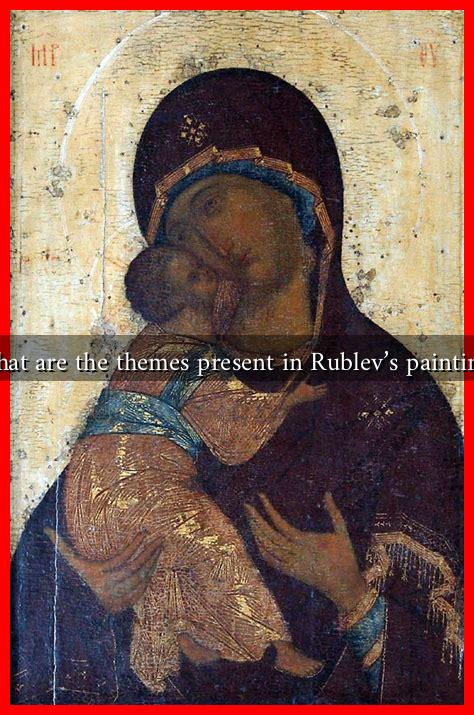-
Table of Contents
Exploring the Themes in Rublev’s Paintings
Andrei Rublev, a 15th-century Russian icon painter, is celebrated for his profound spiritual depth and artistic mastery. His works, particularly the famous “Trinity” icon, are not only visually stunning but also rich in thematic content. This article delves into the key themes present in Rublev’s paintings, providing insights into his artistic philosophy and the cultural context of his time.
The Divine and the Human
One of the most prominent themes in Rublev’s work is the relationship between the divine and the human. His icons often depict biblical figures in a way that emphasizes their humanity while simultaneously highlighting their divine nature. This duality invites viewers to contemplate their own spiritual journeys.
- Humanization of Saints: Rublev’s saints are portrayed with emotional depth, making them relatable to the viewer.
. For instance, in the “Trinity,” the three angels are depicted with distinct personalities, inviting contemplation on the nature of the Holy Trinity.
- Symbolism of Light: Light plays a crucial role in Rublev’s paintings, symbolizing divine presence. The use of gold leaf and bright colors creates a sense of transcendence, drawing the viewer’s eye and spirit upward.
Harmony and Unity
Rublev’s art is characterized by a profound sense of harmony and unity, reflecting the theological principles of the Orthodox Church. His compositions often convey a sense of balance and peace, which is essential for understanding his spiritual message.
- Symmetrical Compositions: Many of Rublev’s icons feature symmetrical arrangements that evoke a sense of order and tranquility. This is evident in the “Trinity,” where the three figures are arranged in a circular formation, symbolizing unity.
- Color Palette: The harmonious use of color in Rublev’s paintings enhances the theme of unity. Soft, muted tones create a serene atmosphere, inviting viewers to reflect on the divine.
Spiritual Journey and Contemplation
Rublev’s paintings often serve as a medium for spiritual contemplation, guiding viewers on their personal journeys toward understanding and faith. His works encourage introspection and meditation, making them powerful tools for spiritual growth.
- Inviting Reflection: The serene expressions of figures in Rublev’s icons invite viewers to pause and reflect on their own lives. The “Trinity,” for example, encourages contemplation of the nature of God and the relationship between humanity and the divine.
- Path to Salvation: Many of Rublev’s works depict scenes that illustrate the path to salvation, emphasizing themes of repentance and redemption. His portrayal of Christ often highlights His compassion and mercy, inviting viewers to seek forgiveness.
The Influence of Byzantine Tradition
Rublev’s work is deeply rooted in the Byzantine tradition, which significantly influences his thematic choices. The use of iconography, symbolism, and narrative elements reflects the rich heritage of Orthodox Christianity.
- Iconography: Rublev employs traditional iconographic elements, such as halos and specific gestures, to convey spiritual truths. These symbols serve as visual shorthand for complex theological concepts.
- Spiritual Realism: While maintaining a connection to the divine, Rublev’s work also reflects the realities of human experience. This balance between the spiritual and the earthly is a hallmark of Byzantine art.
Conclusion: The Enduring Legacy of Rublev’s Themes
Andrei Rublev’s paintings are a testament to the profound themes of spirituality, unity, and contemplation. His ability to humanize the divine while maintaining a sense of sacredness has left an indelible mark on the world of art. Through his harmonious compositions and rich symbolism, Rublev invites viewers to embark on their own spiritual journeys, making his work timeless and relevant even today.
In summary, the themes present in Rublev’s paintings—divine and human relationships, harmony, spiritual contemplation, and the influence of Byzantine tradition—offer valuable insights into the artist’s philosophy and the cultural context of his time. His legacy continues to inspire artists and spiritual seekers alike, reminding us of the beauty and depth of the human experience in relation to the divine.
For further exploration of Rublev’s work and its impact on art and spirituality, consider visiting Encyclopedia Britannica.





